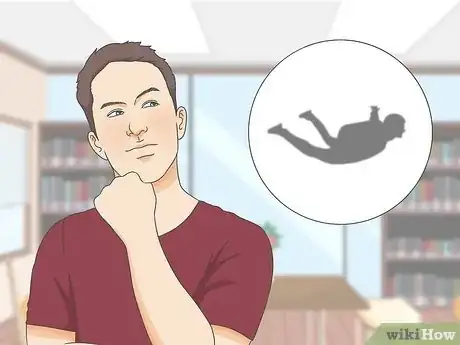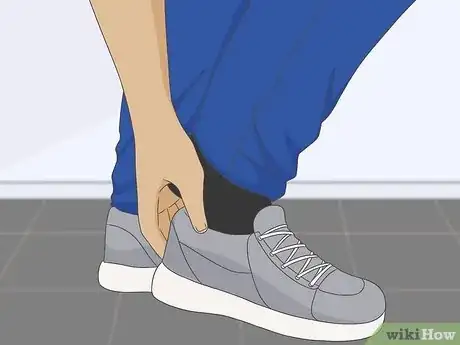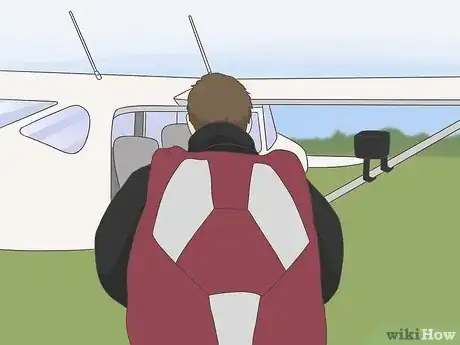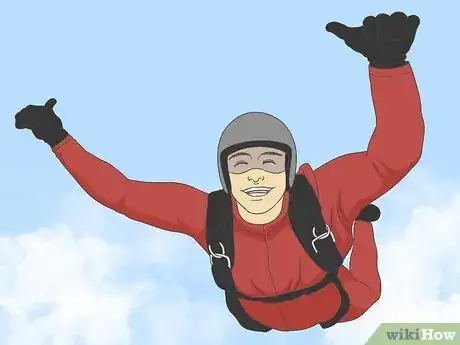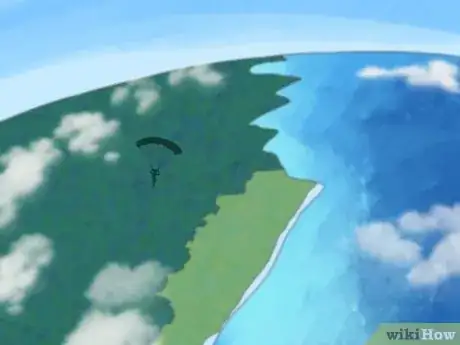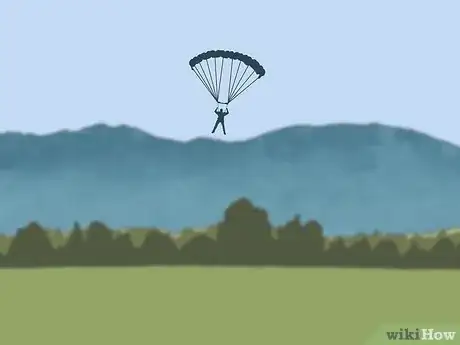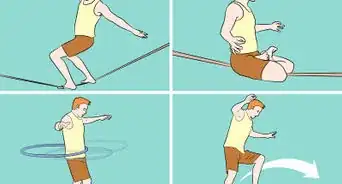wikiHow is a “wiki,” similar to Wikipedia, which means that many of our articles are co-written by multiple authors. To create this article, 56 people, some anonymous, worked to edit and improve it over time.
This article has been viewed 341,776 times.
Learn more...
There's nothing quite like rushing to the earth at 120 miles (190 km) an hour after jumping from a perfectly good airplane. There are no perfect airplanes, however. Skydiving is an exhilarating and intense adrenaline rush that can't be described, you've just got to do it! Here is some advice on how to go about it the right way for your first jump, and hopefully many more.
Steps
-
1Go to the United States Parachute Association's website to locate the nearest affiliated drop zone. Alternatives for other countries:
- Canada : The Canadian Sport Parachuting Association
- UK : The British Parachute Association
- Australia : The Australian Parachute Federation
-
2Call the drop zone to ask about their hours and schedule a skydive.Advertisement
-
3Get all of your questions answered before you pay for the jump. Don't be afraid to ask whatever is on your mind because they've probably already heard your question before from someone else.
-
4Choose the method of your first jump.[1]
- The vast majority of people choose to make a tandem jump. This involves jumping out of the plane while attached via a harness to an instructor who wears a parachute big enough for both of you. It requires very little training and you can just "sit back and enjoy the ride" while the instructor handles all the technical parts of the skydive.
- Another type of jump called an AFF (Accelerated Free Fall) Level One jump is offered at most drop zones. The training for this skydive involves a ground school course taking approximately 5-6 hours followed by a jump with your own parachute. On this type of jump, you will have two experienced instructors holding onto you during your exit from the plane and subsequent freefall in order to assist you with proper body positioning as well as initiating the canopy opening. You will also have the assistance of an instructor on the ground who is in communication with you via radio to assist with your landing pattern and proper "flaring" for landing.
- One additional option you may encounter is a "static line" jump. This jump includes the same training as an AFF Level 1 jump however upon exiting the plane, your parachute is automatically deployed by a "line" attached to the aircraft. Static line jumps have generally decreased in popularity in recent years, and most first-timers end up making either a tandem or AFF Level 1 jump.
- The remainder of this article describes steps related to making a tandem jump which is the most common first time jump.
-
5On the day of the jump, dress for the weather on the ground and wear sneakers. Bring an extra layer if you want but part of the fun is feeling the rush of air and although it is colder at high altitudes, you probably won't notice the difference because of all the adrenaline.[2]
-
6Arrive before your appointment time but be prepared to wait for instructors to become available, the weather to break, etc. Even though you'll only be free falling for a minute, plan on being there for the entire day just in case.[3]
-
7Pay attention. Before your jump, you will get a briefing and meet your instructor; this will help you enjoy your skydive much more. They will fit you into a harness that will connect to the instructor and the parachute.
-
8Board the plane and just soak it all in. Before you reach the jumping altitude (between 9,500 feet and 17,500 feet) the instructor will clip your harness onto theirs. At this point you are literally joined at the hip.
-
9Exit the plane. Listen to your instructor on how they want you to do this because every plane and every instructor/student combination is different.
-
10
-
11Enjoy the view. Once the instructor deploys the parachute you have a 360 degree view of the beautiful earth from about 5,000 feet (1,524.0 m). Your instructor may loosen your harness at this point for your comfort. Don't worry, they won't drop you!
-
12Land safely. Once again, listen to your instructor on how to land. Sometimes you'll stand up for the landing, other times you'll slide in softly. It depends on a lot of factors.[5]
-
13Brag. You just did something that most people don't have the courage to do. Enjoy the accomplishment.
-
14Get certified. If you enjoyed your first skydive and want to do it again, talk to the instructors and the people at the drop zone about how to get certified. It takes a lot of time, money, and effort but you'll find that skydivers are among the happiest people on the face of the earth.
Community Q&A
-
QuestionWhen landing, is it better to run or land flat on your butt?
 Community AnswerOnce you've reached about 20 feet above ground, form your body into an L-shape, with legs up. Once you're low enough, bring your legs down into a running prep. When your feet are on the ground, lean slightly back into a slide or begin running, depending on how low you are.
Community AnswerOnce you've reached about 20 feet above ground, form your body into an L-shape, with legs up. Once you're low enough, bring your legs down into a running prep. When your feet are on the ground, lean slightly back into a slide or begin running, depending on how low you are. -
QuestionIs it safer to fall onto land or water?
 Community AnswerLanding on the water would be very dangerous. The landing could be rough, causing you to panic in the water and get tangled up in the chute. The chute could also fill with water and cause you to sink. Also, hitting the water at such a high speed could be very painful. If you have a choice, always opt for land.
Community AnswerLanding on the water would be very dangerous. The landing could be rough, causing you to panic in the water and get tangled up in the chute. The chute could also fill with water and cause you to sink. Also, hitting the water at such a high speed could be very painful. If you have a choice, always opt for land. -
QuestionWhat is the maximum weight for skydiving?
 Community AnswerIt depends on the person taking you up, but generally, the weight limit for tandem skydiving is 280 lbs.; for AFF skydiving, the limit is 240 lbs. You may be charged extra for higher weights.
Community AnswerIt depends on the person taking you up, but generally, the weight limit for tandem skydiving is 280 lbs.; for AFF skydiving, the limit is 240 lbs. You may be charged extra for higher weights.
Warnings
- Skydiving has been made a lot safer through the years with better equipment and safety, but if the very small chance of dying outweighs what you think you will get out of it, don't do it.⧼thumbs_response⧽
- Don't make reservations with anyone connected to "Skyride" or 1-800-SKYRIDE. This company has been investigated for numerous complaints of fraud and unfair business practices for taking people's money. Use uspa.org and contact the dropzone directly- do not go through a "reservation service" who does not tell you exactly where you will be jumping before they get your credit card information.[6]⧼thumbs_response⧽
- Don't let your friends/family members pressure you into making a jump. If you've always wanted to skydive, great! Otherwise, the cost and the risk just aren't worth it.⧼thumbs_response⧽
Things You'll Need
- Running shoes
References
- ↑ https://uspa.org/Information/Make-A-Skydive/Choose-A-Method
- ↑ https://jetsettimes.com/adventurists/air/10-skydiving-tips-need-know-jump/
- ↑ https://jetsettimes.com/adventurists/air/10-skydiving-tips-need-know-jump/
- ↑ https://uspa.org/Information/Make-A-Skydive/Your-First-Jump
- ↑ https://www.buzzfeed.com/danoshinsky/things-you-should-know-before-you-go-skydiving
- ↑ https://www.governmentattic.org/6docs/ComplaintsFTC-SKYRIDE_2007-2012.pdf
- http://www.uspa.org
About This Article
If you're skydiving for the first time, pay close attention to everything your instructor says before you board the plane. Then, once you're on the plane, relax until you reach the jumping altitude, at which point your instructor will clip you to their harness so you're attached. Listen carefully to how your instructor wants you to exit the plane, and then get ready to jump! Once you jump, you'll free fall at 120 miles per hour until you reach about 5,000 feet. At that point, your instructor will deploy the parachute, and you can take in the gorgeous views before landing! For more tips, like how to sign up to go skydiving for the first time, read on!



